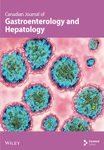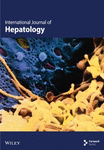Journal list menu
Export Citations
Download PDFs
Editorial
Open Access
oa
The Phosphorus and the Vascular Calcification in ESRD between Old Adventures and New Horizons
- First Published: 27 February 2012
Clinical Study
Open Access
oa
Fibroblast Growth Factor 23 Predicts Left Ventricular Mass and Induces Cell Adhesion Molecule Formation
- First Published: 09 August 2011
Review Article
Open Access
oa
Vascular and Valvular Calcification in Chronic Peritoneal Dialysis Patients
- First Published: 02 August 2011
Review Article
Open Access
oa
Clinical Impact of Hypercalcemia in Kidney Transplant
- First Published: 22 June 2011
Review Article
Open Access
oa
Effects of the Use of Non-Calcium Phosphate Binders in the Control and Outcome of Vascular Calcifications: A Review of Clinical Trials on CKD Patients
- First Published: 09 June 2011
Review Article
Open Access
oa
Endothelin but Not Angiotensin II May Mediate Hypertension-Induced Coronary Vascular Calcification in Chronic Kidney Disease
- First Published: 31 May 2011
Review Article
Open Access
oa
Association of Serum Phosphate and Related Factors in ESRD-Related Vascular Calcification
- First Published: 25 May 2011
Review Article
Open Access
oa
Arterial Stiffness in Chronic Kidney Disease: The Usefulness of a Marker of Vascular Damage
- First Published: 23 May 2011
Review Article
Open Access
oa
Phosphate Metabolism in CKD Stages 3–5: Dietary and Pharmacological Control
- First Published: 23 May 2011
Case Report
Open Access
oa
Vascular Calcification in an Adolescent Treated with Long-Term Peritoneal Dialysis
- First Published: 22 May 2011
Review Article
Open Access
oa
Vitamin D Receptor Activators and Clinical Outcomes in Chronic Kidney Disease
- First Published: 15 May 2011
Review Article
Open Access
oa
Arterial Stiffness and Dialysis Calcium Concentration
- First Published: 26 April 2011
Review Article
Open Access
oa
Calcium Mass Balances in Bicarbonate Hemodialysis
- First Published: 26 April 2011
Review Article
Open Access
oa
Clinical Significance of FGF-23 in Patients with CKD
- First Published: 26 April 2011
Review Article
Open Access
oa
Diagnostic Workup for Disorders of Bone and Mineral Metabolism in Patients with Chronic Kidney Disease in the Era of KDIGO Guidelines
- First Published: 07 April 2011
Review Article
Open Access
oa
The Effect of Paricalcitol on Vascular Calcification and Cardiovascular Disease in Uremia: Beyond PTH Control
- First Published: 29 March 2011
Review Article
Open Access
oa
Treatment of Severe Metastatic Calcification and Calciphylaxis in Dialysis Patients
- First Published: 24 February 2011





